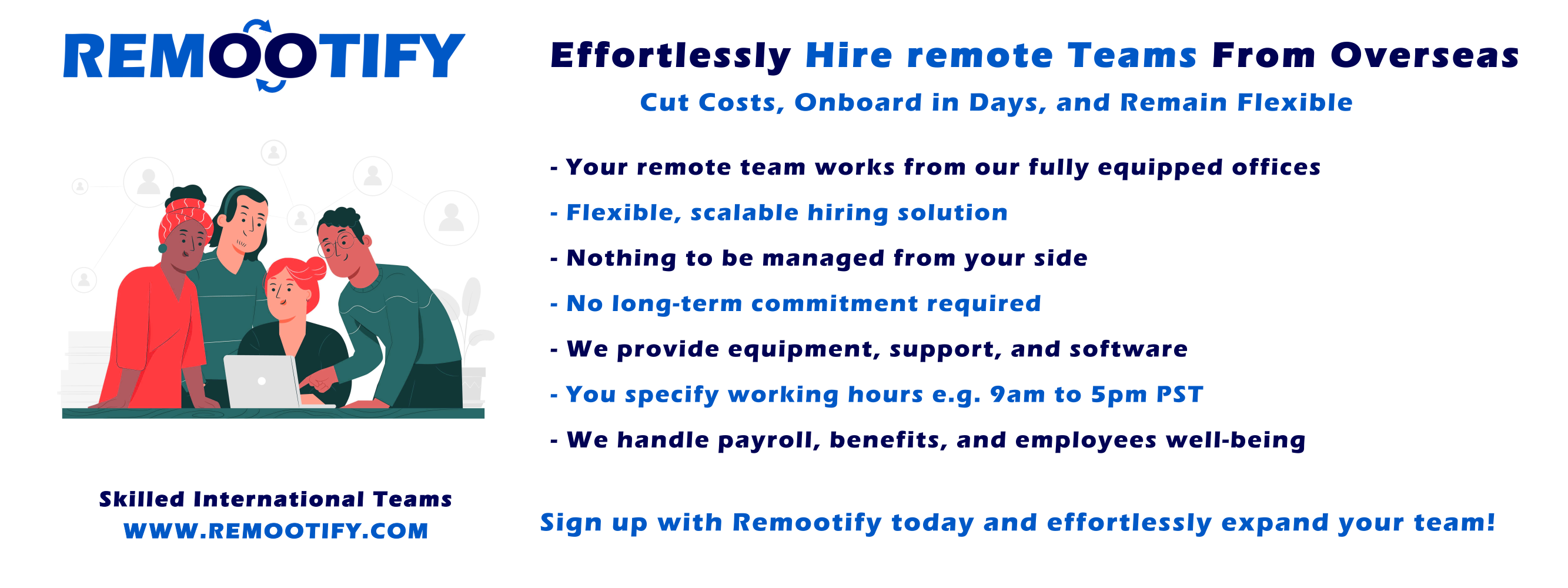Start hiring YOUR REMOTE TEAM, Today!
Enter your information below to start a discussion with one of our team members!

If you’ve been scratching your head, wondering how to strengthen connections within your team, you’ve landed on the right page.
In this digital era, remote work is becoming the norm, and team-building and problem-solving are more important than ever.
And what better way to promote these essential skills than through problem-solving games and puzzles designed specifically for remote teams?
Stick around as we delve into this exciting topic.
Understanding Problem-Solving Activities
Problem-solving activities are not just about finding immediate solutions to issues or challenges that arise in the workplace.
They involve a systematic approach that starts with identifying a problem, analyzing it, brainstorming possible solutions, selecting the most effective solution, and then implementing and reviewing the results.
These activities are crucial in any work environment as they help maintain the smooth flow of operations, improve Productivity, and foster a positive work culture.
They also encourage creativity and innovation, as employees are challenged to think out of the box and develop unique solutions to problems.
Here are some examples of problem-solving activities that are commonly used in the workplace:-
1-Brainstorming sessions:- These are group activities where employees come together to generate as many ideas as possible to solve a specific problem. The goal is not immediately judging or evaluating the pictures but encouraging free thinking and creativity.
2-Role-playing:- This involves employees acting out different scenarios that could lead to potential problems. They can better understand the problem and think of possible solutions.
3-Simulation games:- These are games that mimic real-life situations. They allow employees to practice problem-solving skills in a safe and controlled environment.
4-Case studies:- These involve analyzing real or hypothetical situations to identify problems, analyze them, and propose solutions.
“The measure of success is not whether you have a tough problem to deal with, but whether it is the same problem you had last year.” – John Foster Dulles
For more insights on problem-solving activities, you may want to check out this article on Coursera.
Watch this video to understand how problem-solving activities work in real-life scenarios.
The Four P’s of Problem Solving: A Strategic Approach to Challenges
Problem-solving is not just about finding solutions. It’s about following a systematic approach to ensuring effective and sustainable solutions.

One such approach is the Four P’s of Problem Solving: Prepare, Plan, Perform, and Perfect.
1-Prepare: Understanding the Nature of the Problem
The first step in problem-solving is preparation. This involves understanding the nature of the problem and gathering all the necessary information to tackle it.
It’s about diagnosing the problem accurately and comprehensively to ensure that the solutions developed are targeted and effective.
For instance, if a remote team struggles with Communication, the preparation stage would involve identifying their specific communication issues.
Is it a lack of regular Communication? Or is it miscommunication due to unclear instructions? Understanding the problem in depth is crucial for effective problem-solving.
2-Plan: Developing a Strategy
Once the problem is understood, the next step is planning. This involves brainstorming possible solutions and developing a strategy to implement them.
The planning stage is essentially about creating a roadmap to the solution.
In the context of our example, the planning stage could involve researching different communication tools and strategies and deciding which ones would be most effective for the team.
It could also involve developing a communication protocol to ensure everyone is on the same page.
3-Perform: Implementing the Solution
The third step is performing, which involves implementing the solution. This is where the plan is put into action. It’s important to note that this step might affect some trial and error.
Not every solution will work perfectly the first time, and adjustments may need to be made.
In our example, this could involve introducing new communication tools and strategies to the team and training them on how to use them.
It could also involve monitoring the team’s Communication to see if the new protocol is followed.
4-Perfect: Evaluating and Refining the Solution
The final step in the problem-solving process is perfection. This involves evaluating the effectiveness of the solution and refining it as necessary.
It’s about continuous improvement and ensuring the solution’s long-term effectiveness.
In the context of our example, this could involve regularly checking in with the team to see how the new communication tools and strategies are working.
It could also involve making adjustments to the communication protocol based on feedback from the team.
“The measure of success is not whether you have a tough problem to deal with, but whether it is the same problem you had last year.” – John Foster Dulles
For more insights on the Four P’s of Problem Solving, you may want to check out this article on Business 2 Community.
Watch this video to understand how the Four P’s of Problem-Solving work in real-life scenarios.
The Significance of Problem-Solving Games for Remote Teams
In remote work, problem-solving games are pivotal in fostering Communication, Collaboration, and Camaraderie among team members.
These games are not just about fun and entertainment; they are strategic tools that can help teams overcome the unique challenges posed by remote work.
Problem-solving games for remote teams are designed to simulate real-world challenges that require collective brainstorming, decision-making, and execution. They help teams to develop and hone their problem-solving skills in a fun, low-pressure environment.
Here are some reasons why problem-solving games are essential for remote teams:-
1-Promote Communication:- These games require team members to communicate effectively to solve problems collectively. They help to break down communication barriers and promote open dialogue.
2-Foster Collaboration:- Problem-solving games require team members to work together towards a common goal. They foster a sense of Collaboration and teamwork.
3-Enhance Problem-Solving Skills:- These games challenge team members to think critically and creatively to solve problems. They help to enhance problem-solving skills, which are crucial in any work environment.
4-Build Camaraderie:- Participating in problem-solving games can help team members bond and build Camaraderie. They allow team members to interact in a non-work setting, which can help strengthen relationships.
5-Improve Productivity:- Effective problem-solving can lead to more efficient processes and better decision-making, ultimately improving Productivity.
“The ability to solve problems is a basic life skill and is essential to our day-to-day lives, at home, at school, and at work.” – Michael John Baker
For more insights on the importance of problem-solving games for remote teams, you may want to check out this article on Loumee.
Watch this video to understand how problem-solving games can help remote teams.
Top 5 Problem-Solving Games and Puzzles for Remote Teams
Game 1: Dumb Idea First
Ever heard of the saying, “There’s no such thing as a dumb question”? Well, in this game, there’s no such thing as a dumb idea.

The “Dumb Idea First” game, or the “Worst Possible Idea” method, is a creative brainstorming technique that encourages participants to develop the most absurd or impractical ideas related to a given problem or topic.
The goal is to stimulate creativity and free-thinking, and often, these “dumb” ideas can lead to innovative solutions or insights.
How to Play
1-Define the Problem: Clearly state the problem or topic that needs ideas. It could be a challenge at work, a creative project, or any situation that requires innovative thinking.
2-Brainstorm Dumb Ideas: Encourage all participants to think of the worst, most impractical, or silliest ideas about the problem.
The key is to let go of any inhibitions or fear of judgment. Remember, no idea is too “dumb” for this stage.
3-Share and Discuss: Have each participant share their “dumb” ideas. Encourage open discussion and avoid any negative criticism. The goal is to create a safe space for free thinking.
4-Refine and Develop: After all the “dumb” ideas have been shared, refine them. Often, these ideas, once polished and developed, can lead to innovative solutions that might not have been considered in a traditional brainstorming session.
This method is particularly effective in breaking the ice in group settings and fostering a creative and open-minded environment.
It’s a reminder that sometimes, thinking outside the box means coming up with ideas that might initially seem ridiculous or unfeasible.
For a more detailed explanation and practical examples, you might want to check out these articles:
- What is Worst Possible Idea? | IxDF
- Learn How to Use the Worst Possible Idea Method | IxDF
- Design Thinking Toolkit, Activity 26 – Worst Possible Idea
Game 2: Egg Drop Idea
The Egg Drop Idea is a popular game involving a lot of creativity, problem-solving, and fun!
The game’s main objective is to create a structure that can protect an egg from breaking when dropped from a certain height.How to Play the Egg Drop Idea Game
The game process can be visualized in the following flow diagram:
Here’s a step-by-step guide on how to play the game:
1- Gather Materials: The first step is to gather all the necessary materials. These can include straws, tape, popcorn, or any other materials that can help protect the egg.
2-Create a Protective Structure: Once you have all your materials, the next step is to create a protective structure for the egg. This could be a box made of straws, a parachute, or any other creative design that you think will protect the egg.
3-Place the Egg Inside: Carefully place the egg inside after creating the structure. Make sure it’s secure and well-protected.
4-Drop the Structure: Now comes the fun part! Find a high place and drop the structure. The goal is to have the egg land without breaking.
5-Check the Egg Status: After the drop, check the egg. If it’s intact, congratulations! You’ve completed the Egg Drop Idea game.
For a more detailed explanation and visual guide on how to play the Egg Drop Idea game, you can watch this video, “The BEST Egg Drop Project Idea – using SCIENCE”
Game 3: Lost at Sea
“Lost at Sea” is a fascinating team-building game that encourages critical thinking and decision-making. Here’s a brief overview of how to play the game:
1-Scenario Setup: The game begins by setting up a scenario where the players are lost at sea with a list of 15 items salvaged from a sinking ship. The list can include things like a compass, a shaving mirror, a can of petrol, etc.
2-Ranking Items: Each player individually ranks the items in order of importance for survival. The ranking is based on each item’s perceived utility in aiding survival until rescue.
3-Team Discussion: After the individual ranking, the team comes together to discuss and agree on a collective ranking of the items. This step encourages Communication, negotiation, and consensus-building within the team.
4-Comparison with Expert Ranking: The team’s ranking is compared with an ‘expert’ ranking provided by the U.S. Coast Guard. Points are awarded based on how close the team’s order is to the expert ranking. The lower the score, the better the team’s chances of survival.
5-Reflection and Learning: The game concludes with a debriefing session where the team reflects on their decision-making process, Communication, and teamwork. This step is crucial for deriving critical learnings from the game.
Here’s a flow diagram to illustrate the process:
Game 4: Marshmallow Spaghetti Tower
The Marshmallow Spaghetti Tower game is a fun and engaging activity that encourages creativity, problem-solving, and teamwork.
The game aims to build the tallest possible tower using only spaghetti and marshmallows.
Here’s a step-by-step guide on how to play the game:
1-Start: Gather your participants and explain the rules of the game.
2-Gather Materials: You will need spaghetti and marshmallows for this game. Make sure you have enough for each team.
3-Form Teams: Divide the participants into teams. Each team should have an equal number of members for fairness.
4-Start Building Tower: Each team starts building their tower using only spaghetti and marshmallows. The spaghetti serves as the structure of the tower, while the marshmallows act as the joints holding the spaghetti sticks together.
5-Continue Building Until Time Runs Out: Set a time limit for the game. The teams should continue building their towers until the time runs out.
6-Measure Tower Height: After the time limit, measure the height of each tower. The team with the tallest tower wins the game.
7-Declare Winning Team: Announce the winning team and celebrate their victory!
Here is a flow diagram to visualize the process:
Game 5: Dog, Rice, and Chicken
The Dog, Rice, and Chicken game, or the Farmer’s Dilemma, is a classic logic puzzle that tests your problem-solving skills.
The game’s premise is simple, but the solution requires careful thought and strategic planning.
How to Play
The game begins with a farmer who needs to transport a dog, a sack of rice, and a chicken across a river. However, the farmer’s boat can only carry one item at a time in addition to the farmer’s.
The challenge lies in that if left alone, the dog will eat the chicken, and the chicken will eat the rice.
Here’s a step-by-step guide on how to solve the puzzle:
- The farmer takes the chicken across the river, leaving the dog and the rice on the original side.
- The farmer returns alone to the original side and takes the grain across the river.
- The farmer leaves the grain on the other side of the river and takes the chicken back to the original side.
- The farmer leaves the chicken on the original side and takes the dog across the river.
- Finally, the farmer returns to the original side one last time to get the chicken and brings it across the river.
Following these steps, the farmer successfully transports all three items across the river without being eaten.
Here’s a flow diagram to visualize the process:
FAQ
In this section, we’ll answer some of the most frequently asked questions about problem-solving games for remote teams.
What are some popular problem-solving activities for remote teams?
There are numerous problem-solving activities that remote teams can engage in.
Some popular ones include “Dumb Idea First”, “Egg Drop Idea”, “Lost at Sea”, “Marshmallow Spaghetti Tower”, and “Dog, Rice, and Chicken”.
These games promote creativity, decision-making, and teamwork, making them ideal for enhancing team cohesion and Productivity.
What is the value of team-building exercises in a remote setting?
Team-building exercises are invaluable in a remote setting. They help to foster a sense of camaraderie and belonging among team members, despite the physical distance.
They also enhance Communication, Collaboration, and problem-solving skills, which are crucial for the smooth operation of remote teams.
How can problem-solving games level up a team?
Problem-solving games can level a team by enhancing problem-solving skills, promoting creativity, and fostering teamwork.
These games present challenges that require team members to think critically, communicate effectively, and work collaboratively to find solutions.
Over time, these skills become ingrained, leading to a more efficient and cohesive team.
Can problem-solving activities be conducted for free?
Yes, many problem-solving activities can be conducted for free.
Most games require minimal resources and can be carried out using everyday household items or virtual tools.
The most important thing is the willingness of the team to participate and collaborate.
How can problem-solving activities ease the transition to remote work?
Problem-solving activities can ease the transition to remote work by fostering a sense of teamwork and Collaboration.
These activities provide a platform for team members to interact, communicate, and work together towards a common goal, creating unity and Camaraderie.
This can make the transition to remote work smoother and more enjoyable for everyone involved.
Conclusion
Problem-solving games are a fantastic tool for promoting team building, enhancing problem-solving skills, and fostering a sense of Camaraderie in remote teams.
So why not give them a try? You might be surprised at how much your team can grow and learn through these fun and engaging activities.
Remember, every problem is an opportunity in disguise.





